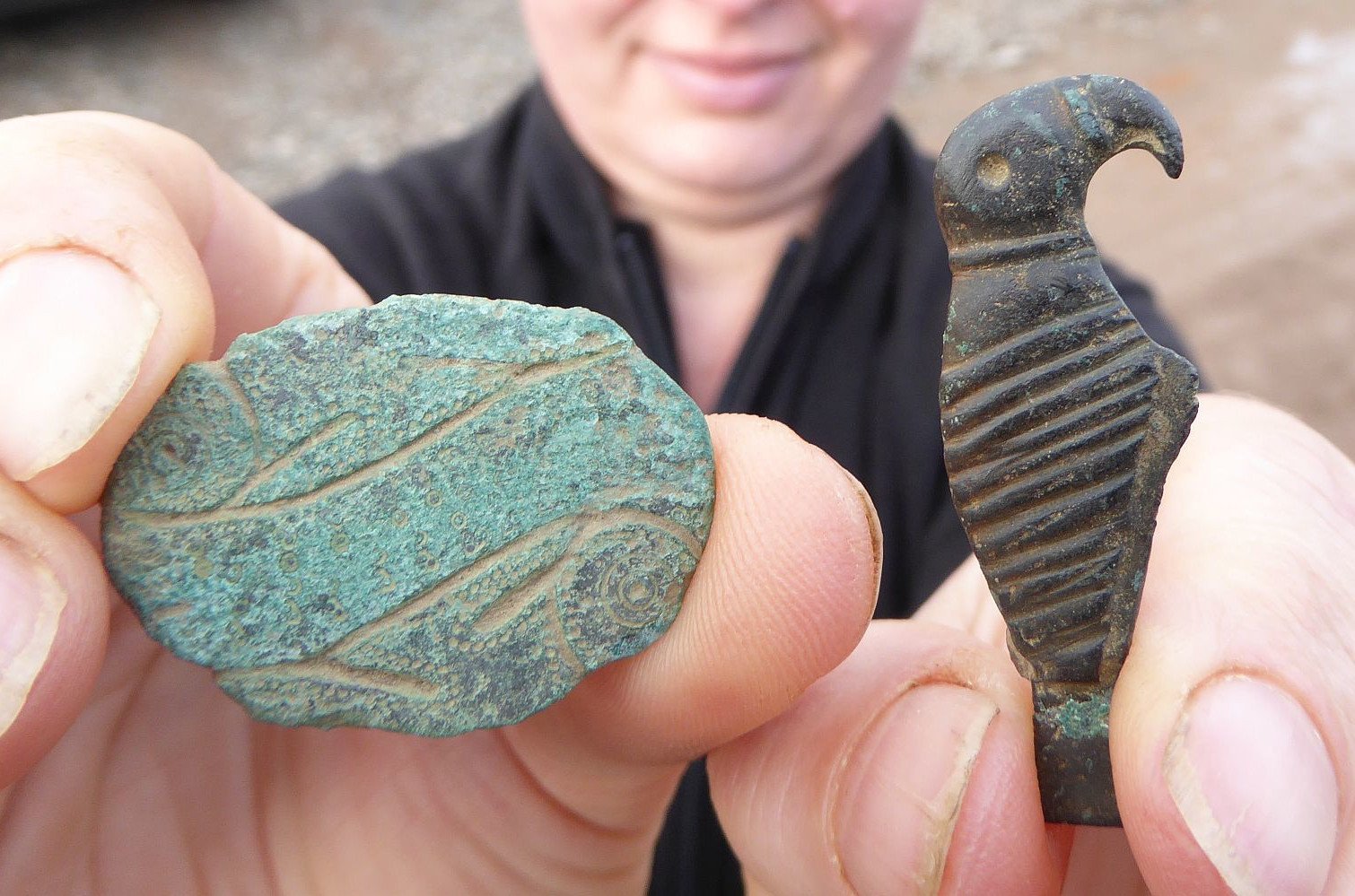As the Weser Valley flows into the northern German plain, archaeological treasures lie in the ground: in the Porta Westfalica region, archaeologists have found traces of settlements from the Migration Period as well as a 3,000-year-old tomb. Previous finds include bronze pins and funerary items such as ceramics and flint tools.
At the beginning of the history of the discovery there was planning to build a new industrial park in the region of Minden-Lübbecke, which also included an archaeological report. When experts from the Regional Association of Westphalian-Lippi took a look at the sources of information on the site about the planned industrial zone, they immediately raised their index finger: the private site indicated that there may be underground sleeper traces in the area.
The area is located near the prominent Weser Peninsula “Porta Westfalica”, as the river makes its way in the cities of Porta Westfalica and Minden from the low mountain range to the lowlands of northern Germany. Porta Westfalica is also famous for the Kaiser Wilhelm Monument, completed in 1896, where visitors can enjoy a panoramic view of the landscape of Northeastern Westphalia.
He finds out in a planned industrial zone
“There is a real archaeological spot where the Weser River cuts through the Wiehen and Weser Mountains,” explains Sven Spiong of the Westphalian-Lippi regional association. Because the stability of the Weser Valley near Minden has been proven for more than 7,000 years. Especially at Porta Westfalica, it comes across fertile soil, which was also plowed in the centuries before the birth of Christ. “The potential traces of the past should not be lost there,” says the archaeologist. So he and his colleagues secured the condition that 80,000 square meters of land area should first be archaeologically examined in long search blocks prior to construction work.
And the experts must be right: the excavation team has already made interesting discoveries: “On the one hand, we discovered a settlement dating back to the sixth century in the area at Porta Westfalica, and on the other hand, we came across a tomb complex from the Bronze Age with the so-called Langpet, Burial Mound. It’s long and rectangular, “says Jasmine Rudiger, excavation director. As reported by the Regional Association of Westphalia-Lippe, the comprehensive evidence also made it possible to draw conclusions about the behavior of the settler community during the migration period.
Traces of a settlement and a tomb from the Bronze Age
Even now, it became apparent that in the sixth century, a community of at least three families had lived on the site for about a generation or two. Then, a move might have been announced: at that time, log houses with logs in the ground did not last any longer. It is possible that the following generations stayed in the area and built new farms in the wider area, ”explains Rüdiger. Finds in the excavation area include ceramics with typical motifs from the sixth century. Obviously, the people at the site also lost small treasures: the bronze pins are particularly beautiful finds – A small brooch in the form of a bird and another with two animal figures depicted in the style of the era.
While it is clear that these discoveries date back to the Migration Period, the tomb is a discovery from the Bronze Age: according to history, it is more than 3,000 years old. Apparently, someone was buried here whose family held a high position in the area at the time, experts say. This is evidenced only by the effort put into creating the burial mound, which was surrounded by a small moat. But the objects found also demonstrate the elevated status of the person buried here: archaeologists have discovered porcelain and the remains of bows and arrows and ocher for coloring skin and clothing.
It looks amazing what the team was able to discover in the area of this planned industrial zone alone. Other traces of sleep in the past may have been in the soils of the “archaeological hotspot” of the Weser Valley, as Spiong describes the area around Porta Westfalica.
Those: Westphalian-Lippi Regional Association

“Alcohol buff. Troublemaker. Introvert. Student. Social media lover. Web ninja. Bacon fan. Reader.”






More Stories
Ecologists Celebrate New Xesap National Park in Laos | Science
Is the wrong diet making you forget?
We can study it with a new telescope.